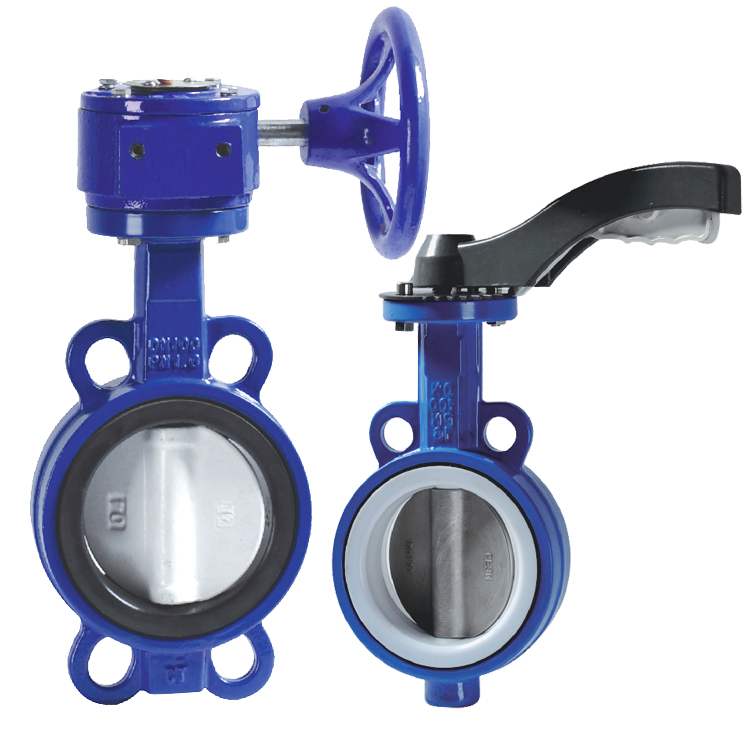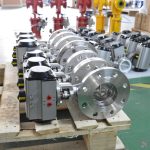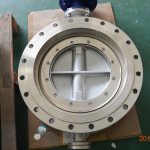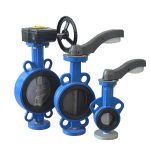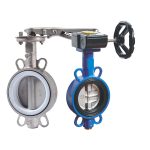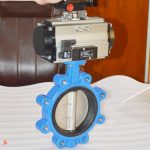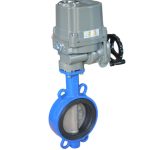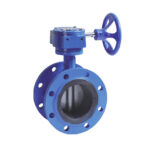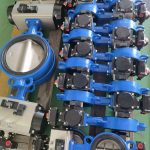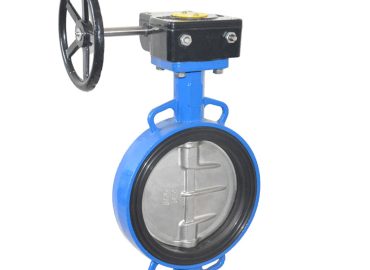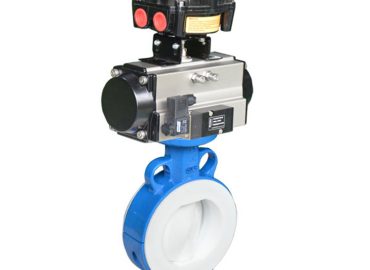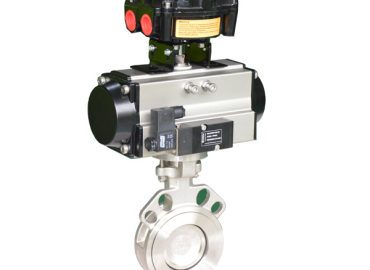Choosing the right butterfly wafer valve for your industrial application is a crucial decision that can impact your operation’s efficiency, safety, and bottom line. These valves play a pivotal role in controlling the flow of liquids and gases in various industrial processes, making their selection anything but trivial. Whether you’re in the petrochemical, water treatment, or food and beverage industry, the right butterfly wafer valve can ensure seamless operation, reduce downtime, and enhance system performance. This blog post will guide you through understanding different types of butterfly wafer valves, key factors to consider when selecting one, and common mistakes to avoid, ensuring you make an informed decision tailored to your specific needs.
Introduction
Selecting the right butterfly wafer valve for your industrial application is not just about picking a component; it’s about ensuring the smooth and efficient functioning of your whole system. These valves are pivotal in controlling the flow of liquids and gases, and their performance can directly impact your operation’s efficiency, safety, and profitability. The first step in making the right choice is understanding the different types of butterfly wafer valves available. Each type has its unique features, benefits, and drawbacks, and is designed to suit specific applications. For instance, some are ideal for handling high-pressure fluids, while others are designed for low-pressure applications. Once you understand the types, the next step is considering key factors such as the material, size, pressure rating, operation type, and long-term maintenance needs of the valve. The material should be chosen based on the type of fluid or gas your system handles. The size and pressure rating should align with your system requirements. You also need to decide between manual and automated operation, depending on your operational needs and budget. Lastly, consider the durability and maintenance needs of the valve to ensure it can withstand your operational demands and doesn’t require frequent replacements or repairs. Making the right choice involves avoiding common pitfalls and misconceptions about selecting butterfly wafer valves. With the right knowledge and considerations, you can select the perfect butterfly wafer valve that ensures optimal performance, reduces downtime, and contributes to the success of your industrial application.
Brief overview of the importance of choosing the right butterfly wafer valve for industrial applications.
Selecting the correct butterfly wafer valve for industrial applications is of paramount importance due to the critical role these components play in various processes. Butterfly wafer valves control the flow of liquids and gases, directly influencing operational efficiency, safety, and cost-effectiveness. The right valve can ensure precise flow control, minimize leaks, and withstand harsh conditions, leading to improved system reliability and longevity. Conversely, an incorrect choice could result in inefficiencies, frequent maintenance, potential safety hazards, and increased operational costs. Therefore, understanding the specific needs of your application and making an informed valve selection is vital in optimizing your industrial processes and maximizing your return on investment.
The role of butterfly wafer valves in controlling the flow of liquids and gases in industrial processes.
Butterfly wafer valves play a pivotal role in controlling the flow of liquids and gases in industrial processes. These valves, characterized by their disc-mounted, rotating design, regulate flow by opening, closing, or partially obstructing various passageways. When the valve is fully open, the disc is turned parallel to the flow, allowing materials to pass through with minimal resistance. Conversely, when the valve is closed, the disc rotates to block the passageway completely, stopping the flow. This simple yet effective mechanism provides precise control over the movement and quantity of fluids or gases in a system, making butterfly wafer valves an indispensable component in many industries, including oil and gas, water treatment, chemical processing, and food and beverage manufacturing. Their efficient operation not only ensures the smooth running of industrial processes but also contributes to maintaining safety standards and operational efficiency.
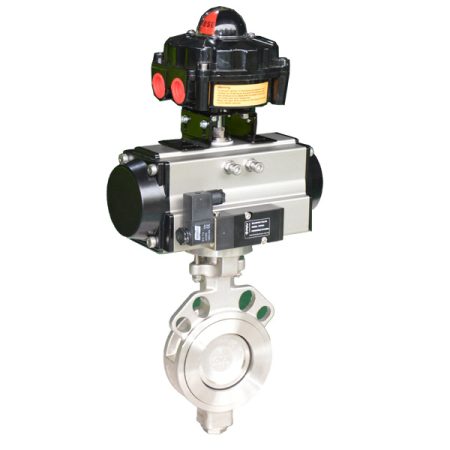
What is a Butterfly Wafer Valve?
A butterfly wafer valve is a type of quarter-turn valve that regulates the flow of a fluid. The valve gets its name from its design, which includes a disc mounted on a rotating shaft. When the valve is closed, the disc is turned to completely block off the flow. When the valve is open, the disc is rotated a quarter turn to allow unrestricted flow. The position of the disc impinges upon the flow of fluid, hence controlling the rate of flow through the valve. The “wafer” in the name refers to the design of the valve’s body, which is thin and fits between two pipe flanges. This makes it compact, easy to install, and cost-effective, especially for large-scale industrial applications. Butterfly wafer valves are used in a variety of industries including water distribution, chemical services, and power generation due to their reliability, simplicity, and ease of use. They offer good control capabilities, quick operation, and durability, making them a preferred choice for many industrial processes. They can handle large flows of liquids or gases, with a variety of construction materials available to handle different types of media and temperatures.
Definition and basic description of a butterfly wafer valve.
A butterfly wafer valve is a type of flow control device that is commonly used in various industrial applications. It consists of a disc attached to a rotating shaft. When the valve is open, the disc is turned so it allows fluid or gas to pass through. Conversely, when the valve is closed, the disc is rotated to block the flow completely. The term “wafer” refers to the valve’s design, which is typically thin and sandwiched between two pipe flanges. This design allows the butterfly wafer valve to be compact, cost-effective, and easy to install. The valve is operated either manually using a handle or automatically using an actuator. With their simplicity, reliability, and versatility, butterfly wafer valves are widely used in industries ranging from water treatment to power generation.
Brief history and evolution of butterfly wafer valves in industrial applications.
The butterfly valve, including its variant the butterfly wafer valve, has a rich history dating back to the 1930s when it was first invented in the United States. Originally introduced as an alternative to gate valves, the early versions were resilient seated butterfly valves. The initial designs were simple and functional, providing a compact solution for flow control with less operating torque and installation space compared to other valve types. Over the decades, their use expanded beyond their original applications, with significant growth observed in the 1950s within the oil and gas industry. As technology advanced, so did the design and functionality of these valves. Innovations led to the development of different types of butterfly valves, such as the wafer, lug, and double flanged styles, each offering unique advantages for specific applications. Today, butterfly wafer valves are widely used in numerous industrial applications due to their efficiency, durability, and versatility, demonstrating the success of their evolution over time.
Understanding the Different Types of Butterfly Wafer Valves
Understanding the different types of butterfly wafer valves is key to selecting the right one for your specific application. While all butterfly wafer valves share the same basic function of controlling flow, they can differ significantly in design, materials, and operation modes. Firstly, there’s the resilient-seated butterfly valve, which features a flexible rubber seat against which the disc seals. This type is commonly used in low-pressure and temperature applications due to its excellent sealing capabilities. Next, there’s the high-performance butterfly valve, designed for higher pressure and temperature applications. These valves feature a double offset design that reduces wear and tear on the valve, extending its service life. Then there’s the triple offset butterfly valve, which boasts an even more advanced design that virtually eliminates wear and provides a tighter seal, making it suitable for extreme temperature and pressure applications. Additionally, butterfly wafer valves can be constructed from a variety of materials, including cast iron, stainless steel, and PVC, each offering different levels of corrosion resistance, durability, and compatibility with various fluids. Finally, these valves can be operated manually using a lever or wheel, or automatically using electric or pneumatic actuators. Each mode has its own benefits, with manual operation being simpler and more affordable, and automatic operation providing greater control and efficiency. Understanding these differences can help you make an informed decision when selecting a butterfly wafer valve for your needs.

Description of the common types of butterfly wafer valves used in the industry.
Butterfly wafer valves, commonly used in various industries, come in several types each with distinct features. The resilient-seated butterfly valve, often used in low-pressure and temperature applications, has a flexible rubber seat providing excellent sealing capabilities. High-performance butterfly valves, designed for higher pressure and temperature applications, feature a double offset design reducing wear and tear on the valve and extending its service life. Another type is the triple offset butterfly valve, which virtually eliminates wear and provides a tighter seal, making it suitable for extreme temperature and pressure situations. Lastly, there’s the doubly-eccentric butterfly valve, with different materials used for seat and disc, often employed where high-performance and durability are needed. These valves can have manual, electric, or pneumatic operation modes, each suited to specific applications. Understanding these types can help in choosing the right butterfly wafer valve for your specific industrial needs.
Comparison of their features, benefits, and drawbacks.
Comparing the features, benefits, and drawbacks of the different types of butterfly wafer valves is essential for choosing the right valve for a specific application. Resilient-seated butterfly valves, known for their excellent sealing capabilities, are ideal for low-pressure and temperature applications, but they may not perform as well in high-pressure or high-temperature environments. High-performance butterfly valves, with their double offset design, can handle higher pressures and temperatures. They offer extended service life due to reduced wear and tear, but they can be more costly than other types. Triple offset butterfly valves, which provide a tighter seal and virtually eliminate wear, are suitable for extreme temperature and pressure applications. However, their complex design can make them more expensive and harder to install and maintain. Doubly-eccentric butterfly valves, with different materials used for the seat and disc, offer high performance and durability, but the material selection might limit their compatibility with some fluids. In terms of operation modes, manual valves are simpler and more affordable, but they may not offer the precision and efficiency of electric or pneumatic valves. By understanding these differences, one can make an informed decision when selecting a butterfly wafer valve.
Examples of specific industrial applications for each type of valve.
Different types of valves find their unique applications across various industries due to their specific features and capabilities. For instance, gate valves, known for their ability to start or stop the flow completely, are commonly used in the oil and gas industry for isolation purposes. Globe valves, which offer precise flow control, are typically found in chemical and power plants where regulation of flow is crucial. Ball valves are preferred in industries like food & beverage and pharmaceuticals due to their sanitary properties and ability to handle viscous fluids with particles. Butterfly valves, due to their compact size and cost-effectiveness, are often used in water treatment plants and HVAC systems for regulating and isolating flow. Lastly, diaphragm valves, known for their excellent sealing capabilities, find usage in industries requiring sterile conditions, such as biotech and pharmaceutical manufacturing. In essence, the choice of valve depends on the specific requirements of the industrial application, such as the nature of the fluid, required flow control, pressure and temperature conditions, and industry standards.
Key Factors to Consider When Selecting a Butterfly Wafer Valve
When selecting a butterfly wafer valve for your application, there are several key factors to consider to ensure optimal performance and durability. First and foremost, the nature of the fluid passing through the valve is crucial. This includes the fluid’s composition, temperature, and pressure, as these factors will determine the material and design of the valve. For instance, high-temperature or corrosive fluids may require a valve made of stainless steel or other resistant materials. Secondly, consider the desired flow control. Some butterfly valves offer better throttling capabilities than others, so understanding your flow control needs is vital. The size of the pipeline is another important factor, as the valve must fit properly to ensure a secure seal and efficient operation. Additionally, the operating environment can influence the choice of the valve. If the valve will be installed in a space-constrained area, a compact wafer-style butterfly valve might be most suitable. Also, consider the actuation method – whether manual, electric, or pneumatic – as this can impact the valve’s ease of use and integration into your existing system. Lastly, don’t overlook the importance of choosing a valve from a reputable manufacturer to ensure quality and reliability. By considering these factors, you can select a butterfly wafer valve that best meets your specific needs and enhances the efficiency and safety of your operations.
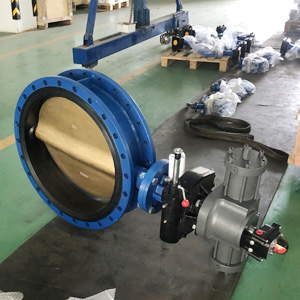
Material: Discuss the importance of valve material in relation to the type of fluid or gas being controlled.
The material of a valve plays a pivotal role in its performance and durability, especially in relation to the type of fluid or gas being controlled. Different materials have varying levels of resistance to corrosion, temperature extremes, and pressure, all of which can significantly impact the lifespan and functionality of the valve. For instance, a valve controlling corrosive fluids or gases should ideally be made from stainless steel or other corrosion-resistant materials to prevent deterioration over time. Similarly, if a valve is expected to handle high-temperature fluids, it needs to be crafted from materials that can withstand these temperatures without deforming or losing integrity. Moreover, certain industries may require valves made from non-reactive materials to ensure that the controlled substance’s properties remain unaltered. Therefore, understanding the nature of the fluid or gas being controlled is crucial in selecting the appropriate valve material, ensuring not only optimal performance but also the safety and longevity of the entire system.
Size and Pressure Rating: Explain how to determine the appropriate size and pressure rating based on system requirements.
Determining the appropriate size and pressure rating of a valve is crucial to ensure efficient system operation and safety. The size of the valve is typically dictated by the diameter of the pipe in your system. A mismatched valve size can lead to issues such as reduced flow rates, increased pressure drops, or even system failure. Therefore, it’s important to accurately measure the internal diameter of your pipe to choose the correct valve size.
The pressure rating of a valve, on the other hand, is determined by the maximum pressure that your system will encounter. This includes both the normal operating pressure and any potential pressure surges. The chosen valve should have a pressure rating that exceeds the maximum system pressure to prevent damage or failure under high-pressure conditions.
In addition, it’s worth noting that some applications may require consideration of other factors, such as temperature and flow rate, when determining the appropriate valve size and pressure rating. Always refer to the manufacturer’s guidelines and consult with a valve specialist if needed to ensure the correct valve selection for your specific system requirements.
Operation Type: Manual vs. automated operation.
The operation type of a valve, whether manual or automated, is another crucial factor to consider based on your system requirements and the nature of your application. Manual operation valves are typically operated by a hand wheel or lever and are often used in applications where the flow needs to be controlled infrequently or where precise control is not critical. They are generally simpler in design, more cost-effective, and don’t require an external power source, making them suitable for smaller systems or less complex operations.
On the other hand, automated valves, which can be electric, pneumatic, or hydraulic, offer greater control and efficiency, especially in larger or more complex systems. Automated valves can be controlled remotely and can be integrated into automated processes, allowing for precise control of flow rates and pressure. They are ideal for applications where frequent or rapid adjustments are necessary, or where safety concerns require the ability to shut off flow quickly and automatically.
However, automated valves are generally more expensive and complex to install and maintain. Therefore, when deciding between manual and automated operation, it’s important to weigh up the initial costs, ongoing maintenance needs, and the level of control required for your specific application.
Maintenance and Durability: Discuss the long-term considerations such as maintenance needs, durability, and lifespan.
When selecting a valve for your system, long-term considerations like maintenance needs, durability, and lifespan are paramount. The type of valve you choose should not only perform efficiently but also stand the test of time. Durability is largely determined by the quality of the materials used in the valve’s construction and its resistance to wear and tear, corrosion, and extreme temperatures or pressures.
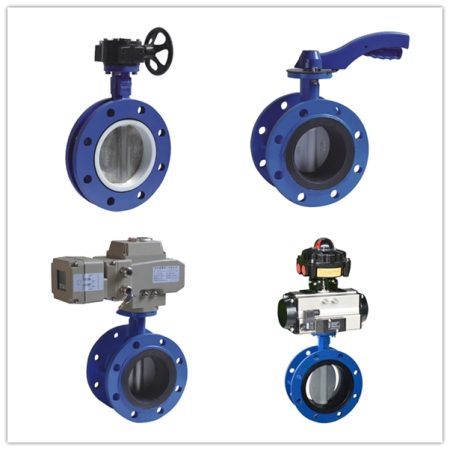
Maintenance needs are another key consideration. Some valves may require regular cleaning, lubrication, or component replacement to maintain optimal performance. Automated valves, while offering superior control, can have more complex maintenance needs due to their additional mechanical or electronic components.
The lifespan of the valve is closely tied to both durability and maintenance. A well-maintained, high-quality valve can significantly outlast a cheaper, less durable option, leading to lower long-term costs. Therefore, it’s important to consider not just the upfront cost of the valve, but also the ongoing maintenance costs and the potential cost of early replacement.
By carefully considering these factors, you can select a valve that not only meets your immediate needs but also offers reliable, efficient operation over the long term. Remember, investing in a durable, easy-to-maintain valve can save time, money, and potentially prevent system failures in the future.
Common Mistakes to Avoid When Choosing a Butterfly Wafer Valve
Choosing the right butterfly wafer valve for your system is crucial to ensure optimal performance and longevity. However, there are common mistakes that individuals often make during this process, which can lead to sub-optimal results or even system failures. One of the most common errors is not considering the nature of the fluid or gas the valve will control. The valve’s material should be compatible with the fluid or gas to prevent corrosion and maintain its integrity over time. Overlooking the temperature and pressure conditions is another frequent mistake. The valve should be able to withstand the maximum pressure and temperature of the system to prevent failure.
Another common oversight is not accurately determining the valve size required. The valve size should correspond with the pipeline diameter for proper sealing and efficient operation. Choosing a valve with an inappropriate actuation method is also a common error. The choice between manual, electric, or pneumatic operation should align with the system requirements and operational convenience.
Additionally, many individuals fail to consider the valve’s maintenance needs and durability. A durable valve made from quality materials might have a higher upfront cost but can save on maintenance and replacement costs in the long run. Lastly, purchasing from an unreliable manufacturer can lead to quality issues and lack of customer support. Always opt for a reputable manufacturer to ensure the reliability and durability of your butterfly wafer valve. By avoiding these common mistakes, you can select a butterfly wafer valve that best meets your specific needs and enhances the efficiency and safety of your operations.
Highlight common pitfalls and misconceptions about selecting butterfly wafer valves.
Lug butterfly valve are commonly used in various industrial applications due to their compact design, efficiency, and cost-effectiveness. However, there are several common pitfalls and misconceptions that can lead to improper selection and usage. One major misconception is that all butterfly wafer valves are the same and can be used interchangeably for any application. This is not true as these valves come in a variety of materials, sizes, and pressure ratings, each designed for specific types of fluids, gases, and operating conditions.
Another common pitfall is neglecting the importance of the valve’s pressure rating. Some may assume that if a valve fits the pipe size, it’s suitable for the application. However, if the pressure rating isn’t compatible with the system’s pressure, it could lead to valve failure.
There’s also a misconception that butterfly wafer valves require no maintenance. While they generally have lower maintenance needs compared to other valve types, periodic inspection and maintenance are still necessary to ensure their longevity and optimal performance.
Lastly, many people underestimate the importance of professional installation. Improper installation can lead to leaks, reduced flow efficiency, and even damage to the valve itself. Therefore, it’s essential to have these valves installed by a trained professional to ensure their proper functioning and extend their lifespan. By understanding and avoiding these common pitfalls and misconceptions, you can make more informed decisions when selecting and using butterfly wafer valves.
Provide tips on how to avoid these mistakes.
Avoiding common mistakes when selecting a butterfly wafer valve starts with a thorough understanding of your system’s requirements. Always consider the type of fluid or gas, along with its temperature and pressure conditions, before choosing a valve. This will guide you in selecting a valve made from suitable materials, with the right pressure rating, to ensure optimal performance and durability.
Accurately measure the diameter of your pipe to determine the correct valve size. A valve that is too large or too small can negatively impact the flow efficiency and potentially cause system failure.
When it comes to actuation methods, analyze your system’s needs and operational convenience. If your system requires frequent or precise flow adjustments, consider an automated valve despite the higher upfront cost.
Don’t neglect the maintenance needs of the valve. Even though butterfly wafer valves are known for their low maintenance, regular inspections and timely maintenance can greatly enhance their lifespan and performance.
Lastly, always purchase from a reputable manufacturer. This ensures that you receive a high-quality product backed by proper customer support. And remember, professional installation is key. It might seem cost-effective to install the valve yourself, but improper installation can lead to numerous issues down the line. Therefore, it’s worth investing in a professional installation to ensure the valve functions properly and lasts longer.
Case Study: Successful Application of Butterfly Wafer Valves in Industry
In the world of industrial fluid control, butterfly wafer valves have proven themselves as reliable and efficient components. A notable case study is their successful application in a large petrochemical plant. The plant required a valve solution that could handle high flow rates, withstand corrosive chemicals, and operate under extreme temperature and pressure conditions. Initially, the plant was using traditional gate valves that were not only expensive but also required frequent maintenance due to wear and tear.
After a thorough evaluation, the plant decided to switch to butterfly wafer valves. These valves, made from durable stainless steel, were not only resistant to the corrosive chemicals but could also handle the high temperatures and pressures in the plant. Additionally, their compact design allowed for easy installation without requiring major changes to the existing infrastructure.
The move to butterfly wafer valves resulted in several significant improvements. Firstly, the plant saw a drastic reduction in maintenance needs and costs, thanks to the inherent durability and low-maintenance nature of these valves. Secondly, the precise control offered by the butterfly wafer valves led to improved efficiency in the flow control, leading to enhanced overall process efficiency. Finally, the cost-effectiveness of these valves compared to traditional gate valves led to substantial savings in the long run.
This case highlights the versatility and reliability of butterfly wafer valves in demanding industrial settings. It’s a clear testament to the fact that selecting the right valve can lead to improved performance, reduced maintenance costs, and overall cost savings.
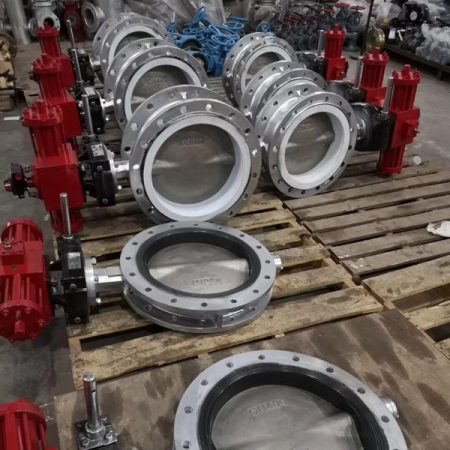
Share a real-world example of an industry effectively using a specific type of butterfly wafer valve.
A real-world example of the effective use of butterfly wafer valves is seen in the water treatment industry. A prominent municipal water treatment facility faced challenges with their existing valve system, which was prone to leaks and required frequent maintenance. They needed a reliable and durable solution that could handle large volumes of water, withstand the corrosive effects of various chemicals used in the treatment process, and operate under varying pressure conditions.
The facility opted for a high-performance butterfly wafer valve made from corrosion-resistant stainless steel. This valve’s design provided tight sealing, preventing leaks even at high pressures, and its material ensured resistance against the harsh chemicals. Moreover, the valve’s disc design allowed for a high flow coefficient, enabling the facility to handle large volumes of water efficiently.
Since implementing these butterfly wafer valves, the facility has reported significant improvements. Leakage issues have been virtually eliminated, maintenance frequency has reduced, and the facility can manage larger volumes of water more efficiently. This successful application underscores the importance of choosing the right type of valve based on specific industry needs and operating conditions.
Discuss the benefits and success factors in this case.
The introduction of butterfly wafer valves in the water treatment facility brought about several benefits and success factors. One of the key benefits was the significant reduction in leakages. The tight sealing mechanism of the butterfly wafer valves ensured a leak-free operation, leading to decreased water waste and increased efficiency.
Another major benefit was the reduced need for maintenance. The stainless steel material of the valve offered excellent resistance against the corrosive chemicals used in water treatment, resulting in a longer lifespan and lower maintenance costs. Furthermore, the high flow coefficient of these valves allowed the facility to handle larger volumes of water more efficiently, improving their overall throughput.
The success factors in this case were largely due to the careful selection of the valve based on the specific needs of the facility. The decision to choose a corrosion-resistant material that could withstand harsh chemicals, along with the selection of a valve design that provided a high flow coefficient and tight sealing, were critical in achieving the desired outcomes. This case highlights the importance of understanding the specific requirements of an operation and choosing the right valve accordingly to ensure operational efficiency and longevity.
Conclusion
In conclusion, the selection of the right butterfly wafer valve is a crucial decision that can significantly impact the efficiency, safety, and cost-effectiveness of your industrial application. As we’ve seen from the case studies and real-world examples, making the right choice can lead to improved performance, reduced maintenance costs, and overall operational success.
However, choosing the right valve isn’t a one-size-fits-all solution. It requires a thorough understanding of your system’s specific needs, including the type of fluid or gas, its temperature and pressure conditions, and the pipeline size. By considering these factors, you can select a valve with the right material, pressure rating, and size that fits your application perfectly.
Don’t overlook the importance of the valve’s actuation method and maintenance needs. While manual valves might be cheaper initially, automated ones could prove more cost-effective in the long run, especially if your system requires frequent or precise flow adjustments. And while butterfly wafer valves are known for their low maintenance, periodic inspection and timely maintenance are still crucial to ensure their longevity and optimal performance.
Always consider purchasing from a reputable manufacturer to ensure high-quality products backed by proper customer support. And remember, professional installation is key to ensure the valve functions properly and lasts longer.
The world of industrial fluid control may seem complex, but with the right knowledge and considerations, you can navigate it successfully. By avoiding common pitfalls and misconceptions, and armed with the tips provided, you’re now better prepared to select the right butterfly wafer valve for your industrial application. Remember, the right choice can not only enhance your system’s efficiency and safety but also result in substantial cost savings in the long run.
Recap of the key points discussed in the post.
In this post, we explored the importance of selecting the right butterfly wafer valve for your industrial application. We discussed common misconceptions and pitfalls, such as assuming all valves are the same, neglecting pressure ratings, underestimating maintenance needs, and overlooking professional installation. We also provided tips on how to avoid these mistakes by understanding your system’s requirements, choosing the correct valve size, considering the actuation method, maintaining regular inspections, and opting for professional installation. Real-world examples and case studies were used to illustrate the successful application of butterfly wafer valves in various industries, highlighting their benefits in improving efficiency, reducing maintenance costs, and achieving substantial savings. Finally, we concluded that making an informed choice based on specific operational needs can significantly impact the performance and cost-effectiveness of your industrial application.
Emphasize the importance of careful selection when it comes to butterfly wafer valves for industrial applications.
The careful selection of butterfly wafer valves for industrial applications cannot be overstated. These control valve play a pivotal role in controlling the flow of fluids or gases in a system, directly impacting its efficiency, safety, and overall performance. Choosing the wrong valve can lead to operational issues, increased maintenance costs, and even system failure. On the other hand, a well-chosen valve, tailored to the specific needs of your application, can enhance operational efficiency, reduce maintenance needs, and result in significant cost savings. Therefore, it’s crucial to thoroughly understand your system’s requirements, consider all relevant factors such as material, size, pressure rating, and actuation method, and opt for a reputable manufacturer when selecting a butterfly wafer valve for your industrial application. This careful selection process is not just about ensuring the smooth operation of your system, but also about maximizing its lifespan and cost-effectiveness.


